More than a frivolous adornment, the hat is a vehicle for expressing an individual's identity and place in the world; it can be a badge of social rank, a symbol of faith and values, a personal aesthetic statement, and more. Hats give clues to the type of environment or climate in a person's life.
The hat, as a fashion accessory, became popular in the 20th century. Around 1900 dress etiquette dictated that a woman should not leave the house without a hat. Owning and wearing a unique model of hat signified the wealth and social status of the wearer.
In this article, I will introduce you to the history of the culture of European aristocrats. Let’s dive in!!
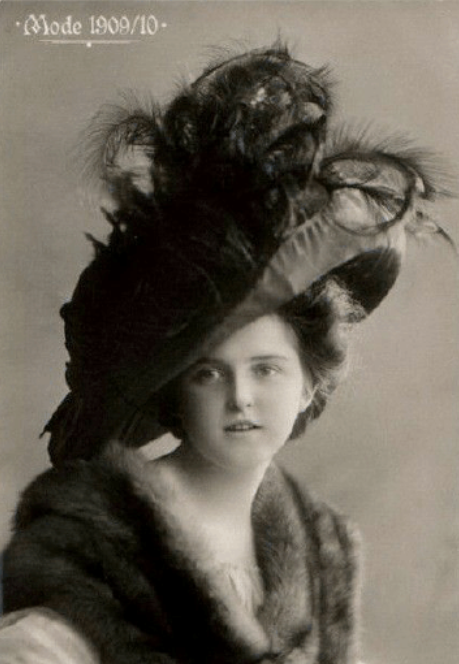
A.Hats in ancient European civilizations, such as Greece and Rome
Ancient Greece hat: The petasos, the quintessential hat of ancient Greek farmers
It was typically made from wool, felt, leather, straw, or animal skin, and its wide brim offered protection against the sun and rain.
Ancient Rome hat: pileus, a close-fitting, brimless hat worn by the ancient Romans and copied from the Greek sailor's hat called the pilos.
In many cultures, hats were used to indicate a person's profession, religion, or social standing. One of the earliest examples of hats can be found in ancient Egyptian tombs, where both men and women were depicted wearing head coverings for protection against the sun.
B. Hat styles, materials, and symbolism during this period
Hats style: Medieval headdresses varied in their form and purpose. Coifs, straw hats, kerchiefs, and hoods were rather practical. Escoffions, on the other hand, were the most glamorous court headdresses.
Hats material: Hats of plant fibers are associated with the ancient rural traditions of Europe and Anatolia. An early statue of Mercury shows his hat to be of finely plaited straw. Artisans of classical Athens and Rome usually wore conical caps with egg-shaped crowns made of felt.
Hats purpose: Protect your head, face, and ears from the cold and weather conditions. Help to regulate your body temperature. Hold back hair out of your face while working outside, playing sports, or exercising. Protect your hair from sun damage and fading, and your scalp from sunburn.
A. The evolution of hats during the Middle Ages and Renaissance
Middle-class men and peasants wore broad-brimmed felt hats, straw hats, and cloth caps. The most common type of cloth cap was the “muffin cap.”
Hats were an important part of medieval garb. Depending on one's occupation and the time of the year, hats could vary from linen head warmers to straw or felt hats, to "borrelia" hats to fine mesh mail coifs, to "sallet" helmets, to visored "business" to miters and crowns.
B. The influence of religion, social hierarchy, and trade on hat styles and designs
Hats can also have a psychological effect on the person wearing them. Wearing a hat can be a source of confidence and self-assurance. The physical act of putting on a hat can be a form of “armoring” oneself, which can help to boost one's confidence and self-esteem.
The Symbolism of the Top Hat: Status, Power, Masculinity. Men who wanted to get ahead in Victorian society had to wear a topper and yet they complained bitterly about this tyrannical accessory.
This picture was found on a Russian website, shot in 1909, and has been 100 years since then. The 19th century is an unusual era in human history; quite important in the history of Western clothing, marking the true maturity of human culture. Before this period, Western clothing had gone through a glorious process; During this period, the clothing culture created by various countries has been perfect, and the light of national clothing culture has illuminated almost every world corner.
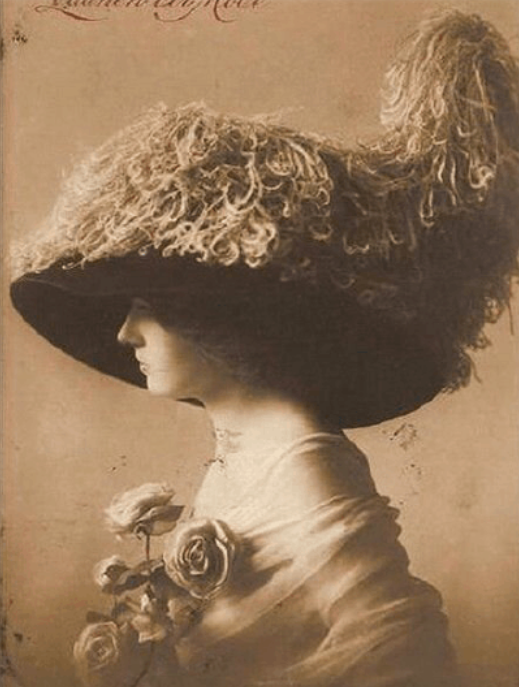
A.Exploration of the extravagant and ornate hats of the Baroque and Rococo periods
While Baroque clothing had been stiff and formal, Rococo women began adapting looser dresses and skirts. Since so much of aristocratic life now centered on private estates rather than the formal court, women began publicly wearing the sort of clothes that had previously only been worn in private.
What were the hairstyles like in the Rococo period? Well, coiffures of the 18th century defined the style of the era. Women's hair was always curled, waved, or frizzed before styling. When higher hairstyles came into fashion, they were accomplished by raising hair over pads made of wool, tow, hemp, or cut hair.
What is baroque-style clothing? Well, the Baroque era ushered in fine fabrics like silk, prevalent ribbons, wigs, and corsets. Ruff collars were popular in the early period, as were baggy breeches for men. French nobility dictated fashion, and the era saw heavily decorated and often outlandish outfits.
B. Discussion of hat trends, including large brims, feathers, and embellishments
What is the hat with a feather called? A cavalier hat is a variety of wide-brimmed hat popular in the 17th century. These hats were often made from felt and usually trimmed with an ostrich plume.
What are wide-brimmed hats called? Sombrero used to be a term that only referred to the specific wide-brimmed style that is best known but today can refer to any hat with a brim or peak. Stetson Hat. Stetson is a brand name of fine quality dress and western hats. Often time Stetson Hat is used interchangeably with Western Hat.
At the same time, the Industrial Revolution launched in Europe also ushered in a new era of clothing, especially clothes of European countries, representing a brilliant period in clothing history.
Historians say that the Industrial Revolution did not come without any reason, which shows that the well of the Industrial Revolution, which has attracted world attention, did not come suddenly, instead, it’s the efforts of many generations, the accumulation of many things, the brewing of many revolutions, and the gradual development of social productivity, finally formed an outbreak in Britain, an island country.
As for why the Industrial Revolution was initiated in the UK, people summarized many reasons, One is the humid climate, suitable for cotton. When using machines to weave, a humid climate makes the yarn less easy to break, causing the booming of the textile industry.
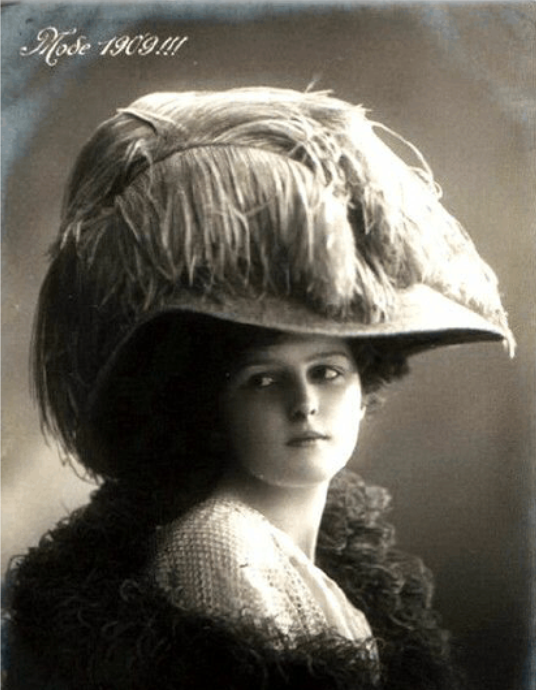
A. The diverse hat styles during the 19th century, including top hats, bonnets, and bowlers
During this stage, the top hat became an essential accessory for men, and women donned a number of different styles, from tiny bonnets to huge floppy Gainsborough chapeaus, or no hat at all when their hair was decorated with a variety of ornaments from simple flowers to expensive jeweled combs.
Top hat: As part of traditional formal wear, in popular culture, the top hat has sometimes been associated with the upper class, and used by satirists and social critics as a symbol of capitalism or the world of business, as with the Monopoly Man or Scrooge McDuck.
Bonnet: They were worn both indoors and outdoors, to keep the hair tidy, to keep dust or flour out of the hair while working, and in accordance with the Christian Bible passage 1 Corinthians 11.
Bowlers: Popular among the working classes in the 19th century. From the early 20th century bowler hats were more commonly associated with financial workers and businessmen working in the financial districts, also known as "City gents".
B. The impact of industrialization, fashion trends, and social changes on hat designs
The fashion of the 19th century is renowned for its corsets, bonnets, top hats, bustles, and petticoats. Women's fashion during the Victorian period was largely dominated by full skirts, which gradually moved to the back of the silhouette.
Towards the end of the 19th century, the rate at which the fashionable silhouette changed quickened. The increasing popularity of paper patterns and the growth of women's fashion periodicals encouraged home dress-making during the second half of the 19th century.
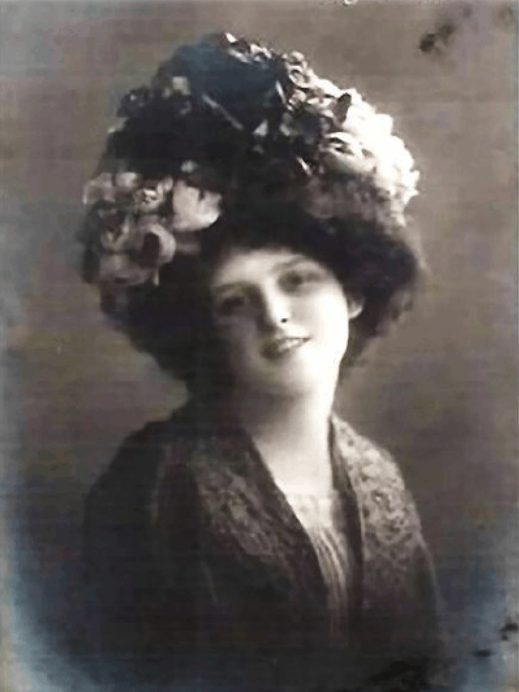
Since the 1920s, the change of women's hats has not stopped. Some wide-brimmed hats are wrapped with ribbons and inserted with countless feathers as if they were about to take off at any time. Some hats are also decorated with windmills and tent decorations, shaped like the propeller of an aircraft.
When not wearing a hat at night, women also pay special attention to their hair. They comb their hair smooth and bright and tie it up with a few strings and braids, which are then supported by metal wires, hairpins, and high-backed wooden combs. Flowers and feathers intertwine to form a distinctive style of the times.
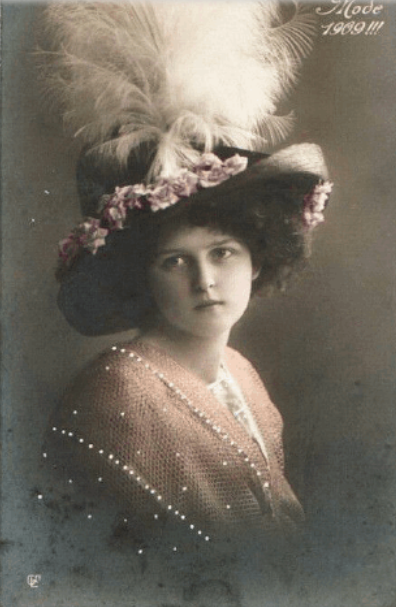
Feathers and flowers are regulars on hats
After that, women's clothes become more comfortable and loose. By the 1950s, hoop skirts revived again. However, this time, the widely accepted American skirt support is no longer the early rattan or whalebone, but made of rubber wrapped around the clock spring steel, much lighter and softer.
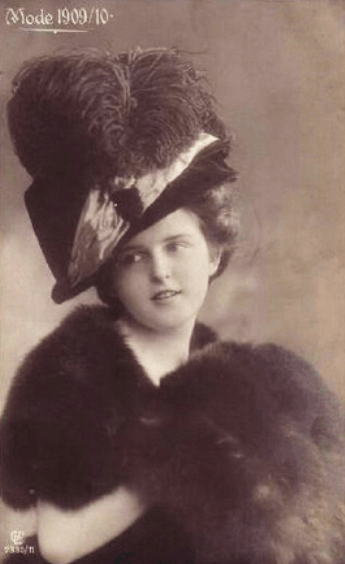
Exaggerated hats paired with luxurious clothing
At the same time, white satin shoes with black ribbons or large roses, as well as hanging earrings, pairs of bracelets, and necklaces of various styles are very popular. Folding fans, gloves, and sun umbrellas with exquisite decoration make women's clothing perfect
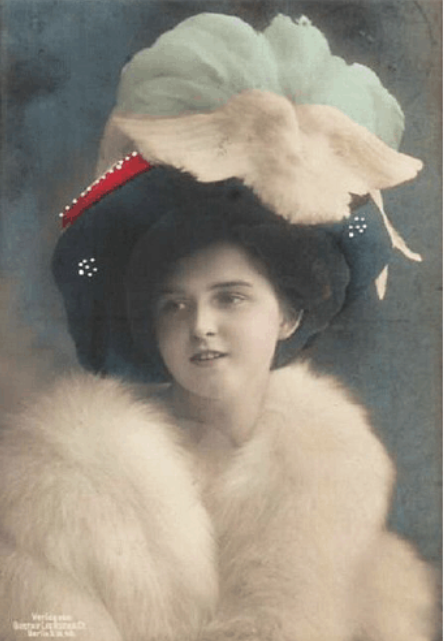
European ladies in hats
A.Unique hat traditions in different European regions, such as the beret in France and the fez in Turkey
The French béret is a flat, round felt hat, originally worn by shepherds and farmers to get some protection from the sun and rain. Over time, it became associated with French culture, as it was used by French military forces, artists, and intellectuals in the early 20th century.
In the same way as the baguette or the wine, the Basque beret represents an emblem of France and of its people. Since the 18th century, it has been considered the headgear of creative people, of artists such as Auguste Rodin and Pablo Picasso.
The fez became a symbol of the Ottoman Empire in the early 19th century. In 1827, Mahmud II mandated the fez as a modern headdress for his new army, the Asakir-i Mansure-i Muhammediye. The decision was inspired by the Ottoman naval command, who had previously returned from the Maghreb having embraced the style.
The Hat Revolution in Turkey resulted in the 1925 legal regulation which intended to regulate men's head-covering practices and make them compatible with the norms in Western countries. Thus, the fez was banned and men were encouraged to wear hats in its place.
The cultural significance and symbolism of these regional hats
The hat represents authority and power. Because it covers the head, the hat contains thought; therefore, if it is changed, an opinion is changed. The covered head shows nobility and different hats signify different orders within the social hierarchy. Removal of a hat upon entry into a building shows respect.
A. Contemporary hat styles and trends in Europe
People in Europe normally wear berets, bucket Hats, fedora for women, sun hats, and straw hats.
The biggest summer 2023 hat trends are the enlarged cloche hat, oversized fedora hat, boater hat, oversized sun hat, crochet bucket hat, and quiet luxury baseball cap.
B. The impact of globalization, technology, and sustainability on hat design and production
Globalization and technology bring innovation to hat design, more and more new materials are invented, creating better headwear for people. One example is the sustainable cap.
If it's made with synthetic materials like polyester or nylon, it'll sit in a landfill for hundreds of years. A truly sustainable hat is created with natural materials that will biodegrade over time.
Some sustainable hat materials are bamboo, a popular sustainable material for hats because of its fast-growing and renewable nature. Also, hemp is another great alternative to traditional hat materials like cotton or polyester. Organic cotton, recycled materials, etc.
Throughout the history of hat development, we will find that the earliest hat is actually similar to a headscarf, just a piece of cloth; In terms of hairstyle, no rules, shawl, or hair. Later, it gradually became quadrangular. At the end of the 18th century and the beginning of the 19th century, it had a very wide brim. During this period, women's hairstyle gradually developed into curling and braiding.
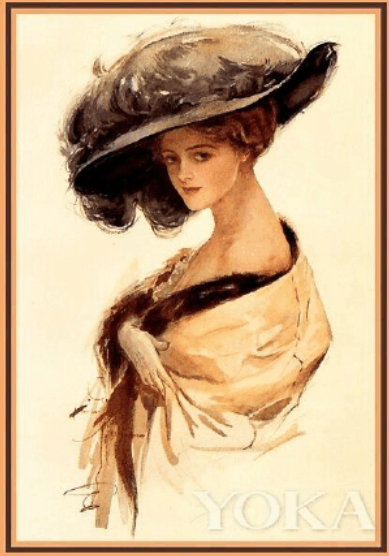
Carefully observing the hats in Europe, we will find that on the brims that can't be wider, it seems that everything in the world can be "piled", such as flowers, specimen birds, fruit baskets, and so on. The trend of hat is also gradually developing from plain to plateau. The more complicated the hat, the simpler the hairstyle.
All kinds of hair and BUN became the mainstream of this era. Loose and bulky, colorful, and easy-to-shape feathers became one of the best choices for hat decoration in that era. Feathers of different textures are made into hats of different shapes. With curled hair, they are gorgeous noble girls.
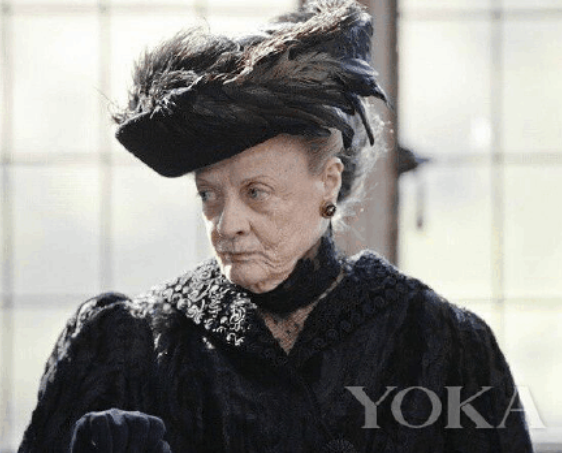
Representative: the old lady in Downton Abbey, with a feather hat and meticulous and capable hair. Even old, still with a lot of momentum.
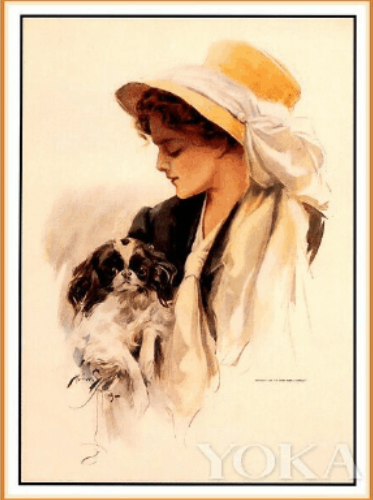
Silk texture is moist and shiny, full of flexible and gorgeous aristocratic temperament, so it has also become the first choice of accessories for women's hats. Especially in the late 19th century, in the west, if a woman doesn't wear a hat, she might be uneducated. In a few years, she will be regarded as an "immoral woman". Therefore, the silk and satin bow became the VIP on the lady's hat of that period. For this kind of hat, women usually choose curled hair or simple braided hair to balance the gorgeous hat decoration.
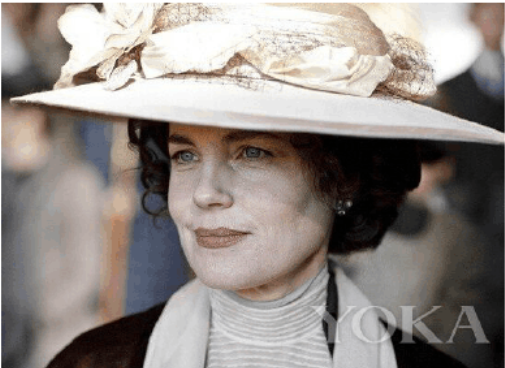
Representative: the lady in Downton Abbey, an era younger than the old lady, dignified, virtuous and tenacious under the decoration of a ribbon hat.
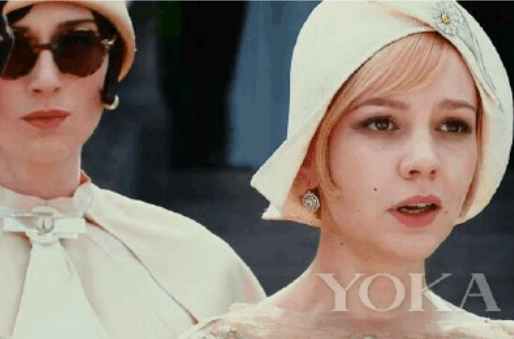
The bell-shaped hat is the most classic piece of the 1920s, in the films "the Great Gatsby" and "The Mystery of changing children". The female stars of the golden age of Hollywood vividly interpret the introverted and implicit charm of the bell-shaped hat, retro and elegant.
Clochehat (English: clochehat) is a bell-shaped female hat, which was popular in the United States from the 1920s to 1933, invented by French designer Caroline Reboux in 1908. Its name comes from the French word "Cloche", which means "clock".
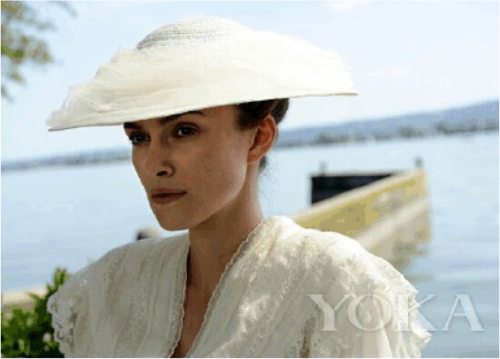
During World War II, people were busy with war or dealing with life due to a lack of materials. Women in this era were still bound by their age. Even if they were aristocrats, they also chose dignified development, not pursuing pretty hats. The bamboo-shaped hat is like an umbrella on the bun.
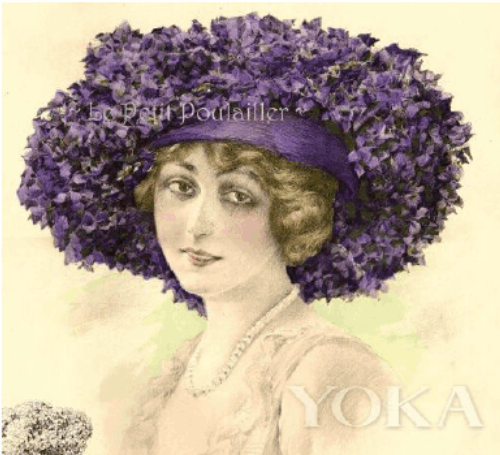
In the post-war world, women were also liberated and had free hairstyles. Curling hair or shawling hair, are all suitable. In 1947, Dior successfully created the "new image" fashion series, also known as the "corolla line", named after an upward flower. At the same time, this style has been denounced by British politicians and caused conflicts in society. Opponents think it is wasteful and restrictive.
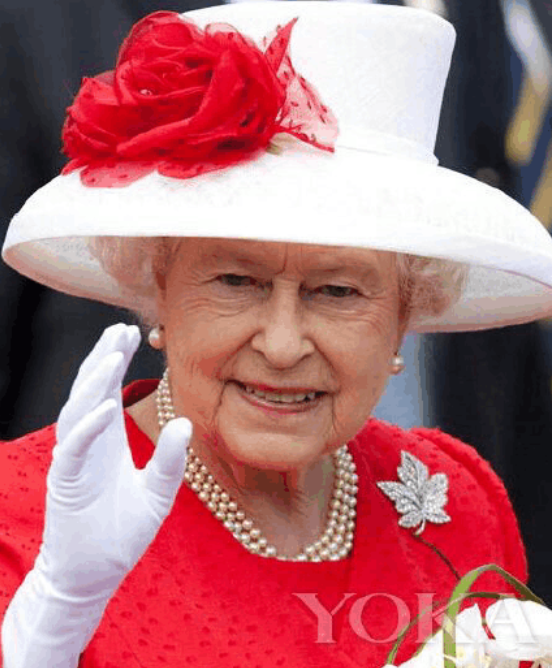
So far, personality and beauty have become the pursuit of hats by women all over the world. As for the straight curl of hair, comb, or dish, it has also become capricious. Look at today's European celebrities. Their love for hats is no less than that of women a hundred years ago.
According to British media reports, generally on the third day of the Royal Jockey Club, which is what the British call "Lady's Day", according to tradition, women will appear with strange and creative hats to compete for beauty and attract attention.
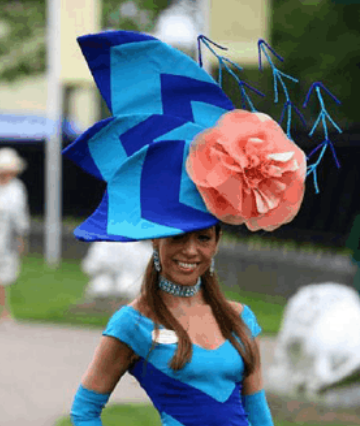
British traditional lady's day
A.Notable European hat designers and milliners throughout history
Philip Anthony Treacy OBE (born 26 May 1967) is an Irish haute couture milliner, or hat designer, who has been mostly based in London for his career, and who was described by Vogue magazine as "perhaps the greatest living milliner".
Caroline Reboux was one of the most renowned high-fashion milliners of the late 19th and early 20th centuries. After Reboux's death in 1927, the firm was able to maintain its high reputation under the management of its top designer, Madame Lucienne.
Rachel Trevor-Morgan is a British milliner best known for the hats she created for Queen Elizabeth II. Royal Warrant to Queen Elizabeth II from 2014 until the death of Queen Elizabeth II on 8 September 2022.
Also, in French, you have Coco Chanel (1883-1971) Unknown author, Public domain, via Wikimedia Commons, Christian Dior (1905-1957), Pierre Cardin (1922-2020), Jean Paul Gaultier (1952-), etc.
B. Contributions to the world of fashion and hat design
Take Treacy for example, she designed the Beauxbatons hats for Harry Potter and the Goblet of Fire. Treacy has designed hats for films, including the Harry Potter film series, and most notably the Beauxbatons hat for Harry Potter and the Goblet of Fire in 2005.
A. Recap of the rich and diverse history of European hats
Again, as for its history, it can be extended back millennia, with possible evidence of hats appearing as early as 30,000 years ago. Many head coverings throughout history and around the world carry religious or ceremonial significance. Hats can convey social status or military rank, much like Napoléon Bonaparte's signature bicorne hat.
B. The continued importance of hats as a reflection of European culture, fashion, and individual style
Historically speaking, headpieces and hats were status symbols and a way of signifying one's place in society. Up until the 1950s, wearing a hat while outdoors was simply what everyone did. Through the years, the styles and trends have changed, of course. In the 1940s, “doll hats” became popular.
Hats are part of the "social fabric" of special occasions in British society. Upper-class and royal women rarely showed their hair in public until the 1950s, and the royal family often maintained old traditions.
Anyway, hat matters a lot in European history, For more ideas, please comment below and let us know!!